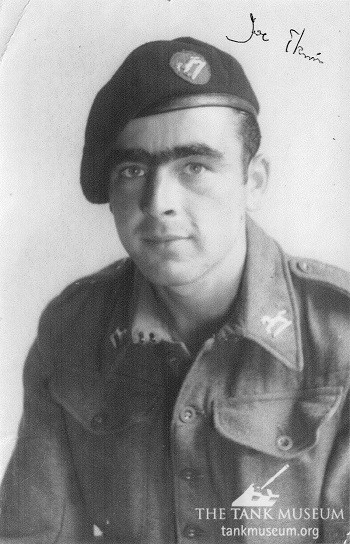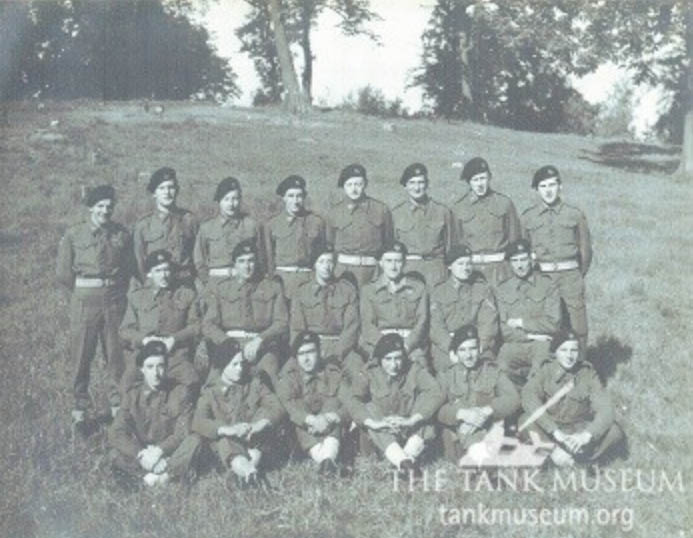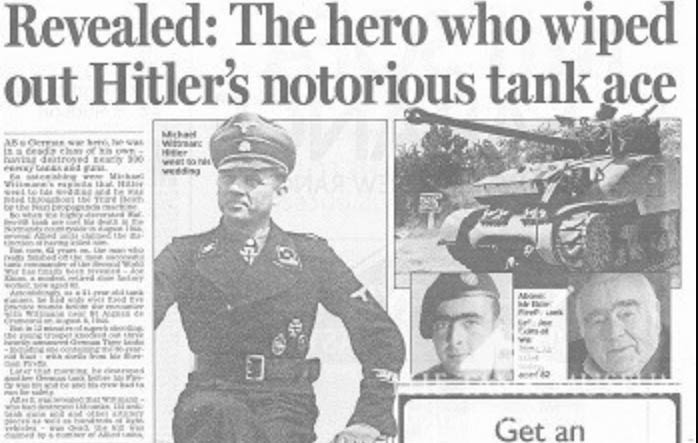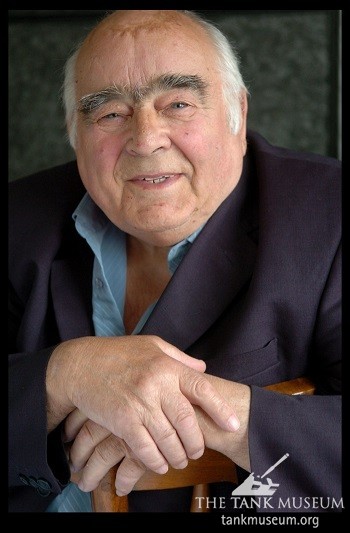Joe Ekins remains one of the most famous WWII British tank gunners for taking down three Tiger tanks with five shots, including that of Nazi panzer ace Michael Wittman. With The Tiger Collection opening in April, it is vital not to forget the stories of tank crews on both sides of the conflict.
Although Ekins described volunteering for the army as “the biggest mistake of my life”, his skill, courage and luck in combat marked his place in history.
On 8 August 1944, as part of an Allied offensive to break through the German defences south of Caen, A squadron of the 1st Northamptonshire Yeomanry positioned themselves just south of the French town of St. Aignan de Cramesnil.
Spotting the Tigers
Looking out across a flat expanse of land from the cover of an orchard Joe recalls the moment he spotted the Tigers: “There were three Tigers coming across our front, about 1200 yards away all three in a line with quite a space apart. We waited until they were at 800 yards and our tank commander pulled us out from the orchard and told me to target the rear one.”
He recollected thinking: “There’s no way one tank is gonna knock out three Tigers, no way! You allow five Sherman to one Tiger, there’s no way they’re gonna knock ‘em out, but he still sent us out on our own, I mean, I don’t know how I weren’t killed, I should’ve been, should’ve been.”
For Allied tank crews the sight of three Tiger tanks was not a welcome one. Their reputation for having unmatchable strength – a deadly 88mm gun and almost impenetrable 120mm thick armour – preceded them so much so Allied crews believed it would take five Shermans to bring down just one.
Ekins’ Five Shots

Firing two shots, Joe hit the rearmost Tiger setting it alight. “At 800 yards the things were only tiny but I could see the gun of the second Tiger coming round to fire at us,” he recalls.
It was at this point Joe realised his Sherman Firefly would be on its own against the two remaining Tigers, the ordinary Shermans that were positioned alongside Joe were no good at this kind of range and the squadron’s two other Fireflies were elsewhere nearby. To this day Joe doesn’t know why his commanding officer didn’t re-deploy them to face the threat he was now facing alone.
The second Tiger fired two rounds and hit the turret of Joe’s tank injuring the commander and causing him to jump out. With the troop officer taking command, the tank pulled out from the orchard again and Joe was ordered to fire at the second Tiger. This time one shot was enough to turn the enemy tank into a ball of smoke and flames on the horizon.
By now the third Tiger was in search of some shelter from the onslaught but two more shots from the Firefly and it too was reduced to flames. “I was frightened to death,” says Joe. “After I was just so relieved and I said to the lads ‘it’s not going to be us today’.”
Amazingly the five rounds Joe fired on this day were the first he had ever fired in combat. He had successfully destroyed three of Germany’s most deadly machines and all at a range that made them look like miniatures.
You might assume such accuracy came from extensive and rigorous training. Not so. The Fireflies had only been ready six weeks before the squadron was deployed and the number of times Joe took it out on the firing range: once!

“I suppose I must some have some natural ability,” Joe smirked. And who can argue? On a visit to The Tank Museum in 2000 Joe was given the opportunity to fire the gun of a Challenger 2 – the tank the British Army uses today. Not surprisingly the then 78-year-old hit the target first time and became the oldest gunner of a Challenger 2.
Michael Wittmann
Incredibly, what makes Joe’s Tiger assault even more remarkable is with one of his hits he had unknowingly killed German gunner Michael Wittmann, a member of the SS and claimed to be one of the Nazi’s most prolific commanders with 140 tank kills to his name.
Wittmann had shot to fame in Nazi propaganda for his role in resisting the Allied offensive at the Battle of Villers-Bocage. What’s incredible is the contrasting legacies of Wittmann, a well-documented Nazi, SS career soldier and close friend of Hitler’s (the Führer attended his wedding) and the quiet, humble and relatively uncelebrated man opposite who had brought about his downfall in such extraordinary fashion as a voluntary member of Britain’s wartime citizen army.This fact is of little consequence to Joe who despised the way the Nazis heralded their commanders as heroes. “I’m quite proud,” he said, “but he was just another man who would have killed me if I hadn’t have killed him first.”

The same day as destroying the three Tiger Tanks, Joe’s Firefly went on to disable a fourth German tank before being hit and immobilised itself leaving Joe to be reassigned to a new Sherman tank crew as – much to his disbelief having demonstrated his natural ability for tank gunnery – a wireless operator, meaning Joe would never have to fire in combat again.
Joe remained with this crew for the rest of the war. Remarkably, this crew remained together for the rest of the war without being knocked out.
After the war
After 1945 Joe went to work in the shoe factory he left before the war and married the woman he’d fallen in love with whilst training with his regiment in Gloucester. Putting himself through night school he became manager within four years of returning and spent the rest of his working life there. He passed away in 2012 at the age of 88 with two grandchildren.

Despite having spent the war destroying them, Joe strongly supported the Museum’s mission to renovate Tiger 131: “It’s so important to preserve the Tiger tank and keep it moving so that young people can understand the fatality of war.”
The quotations used within this article were taken from interviews he gave while visiting The Tank Museum on several occasions. Here more from Ekins and other veterans at The Tiger Collection.
A message from The Tank Museum:
“Please Support Us: As a charity, we rely on public support for all our activities. Our work is funded entirely by people like you. With your support, we can continue to create content. With the right support we might be able to do it more regularly – and can be even more ambitious. Please Click on the Banner Below.”
Thanks to the Tank Museum for this Blog, which originally appeared here.

